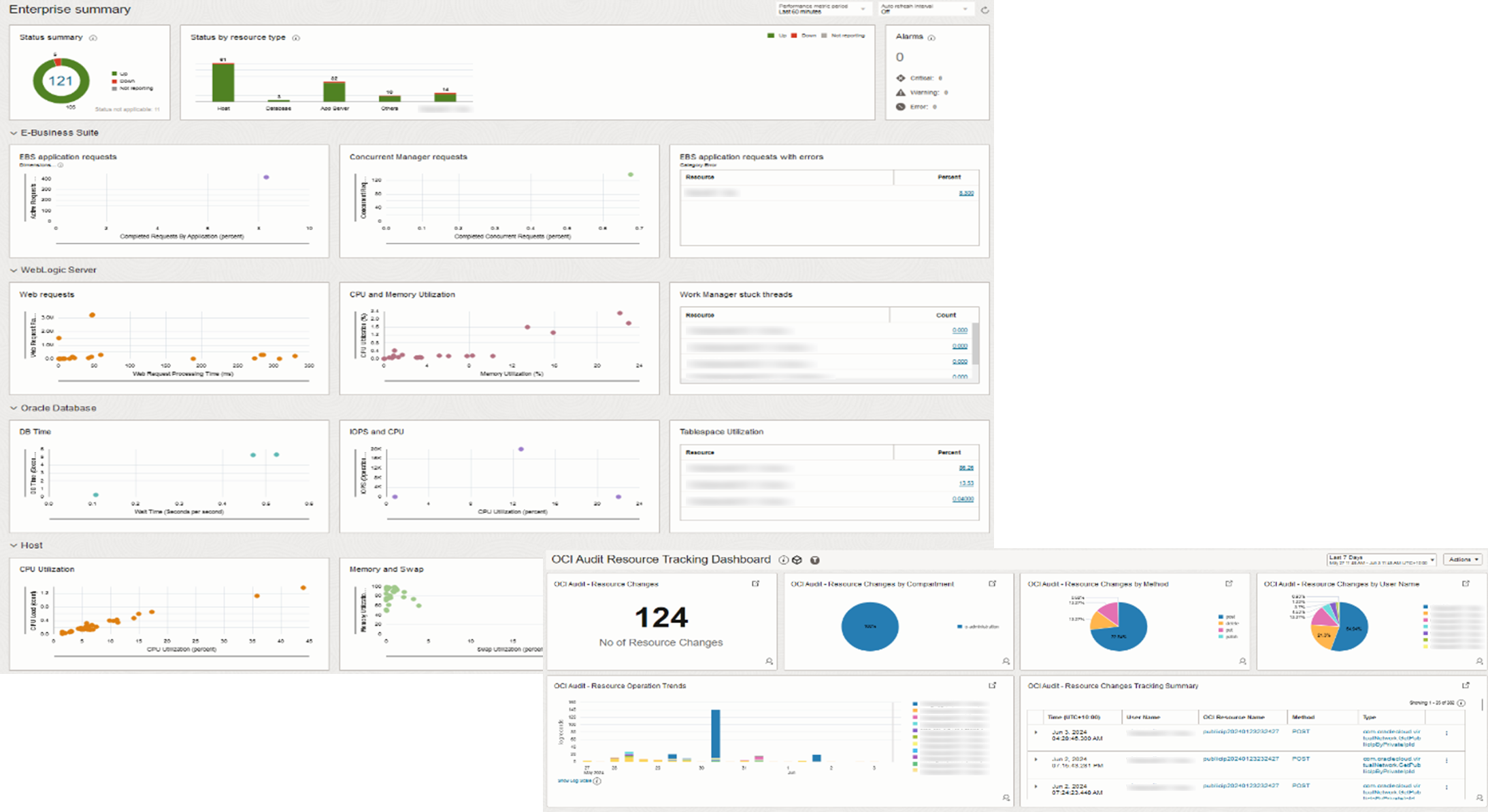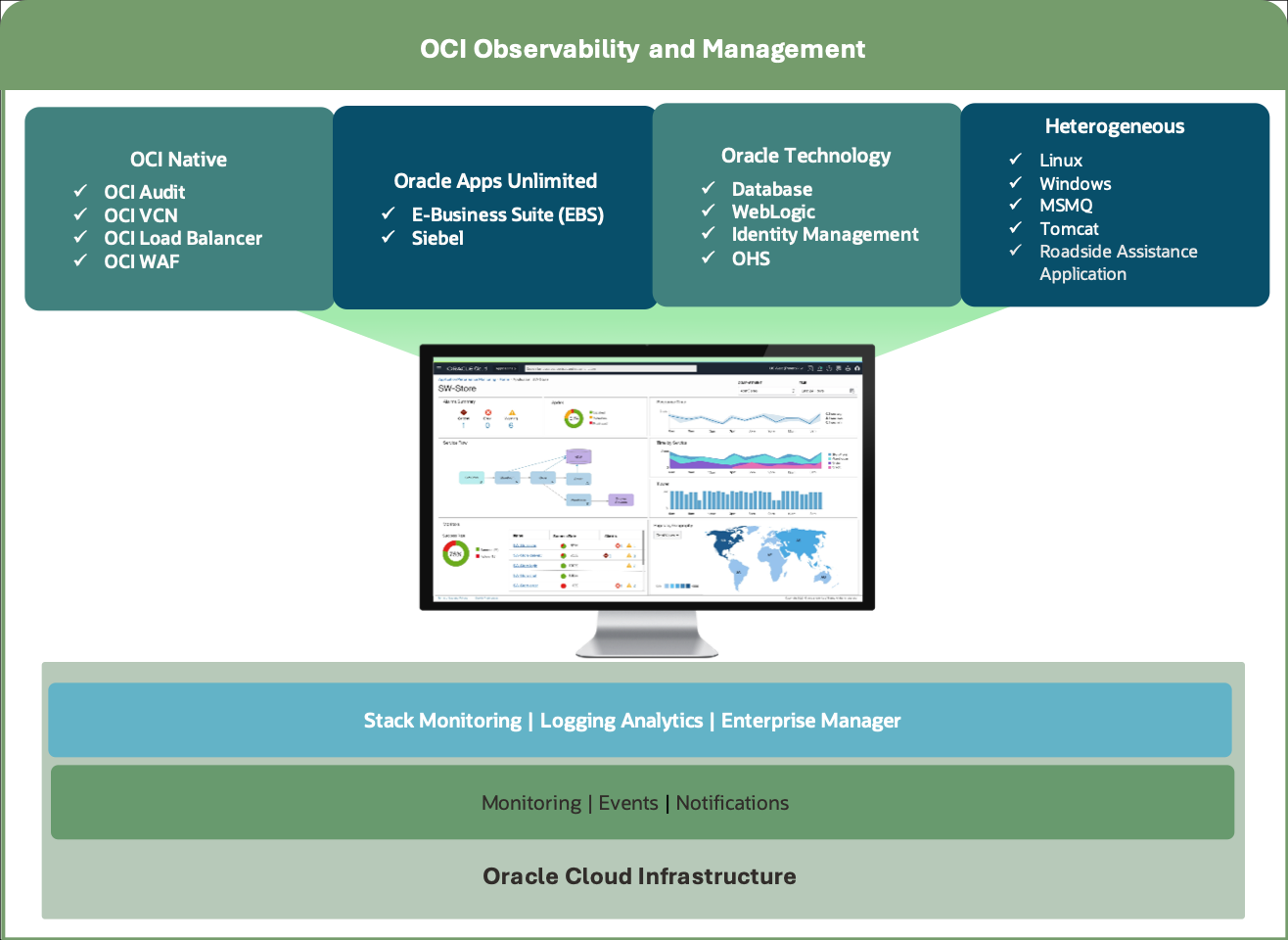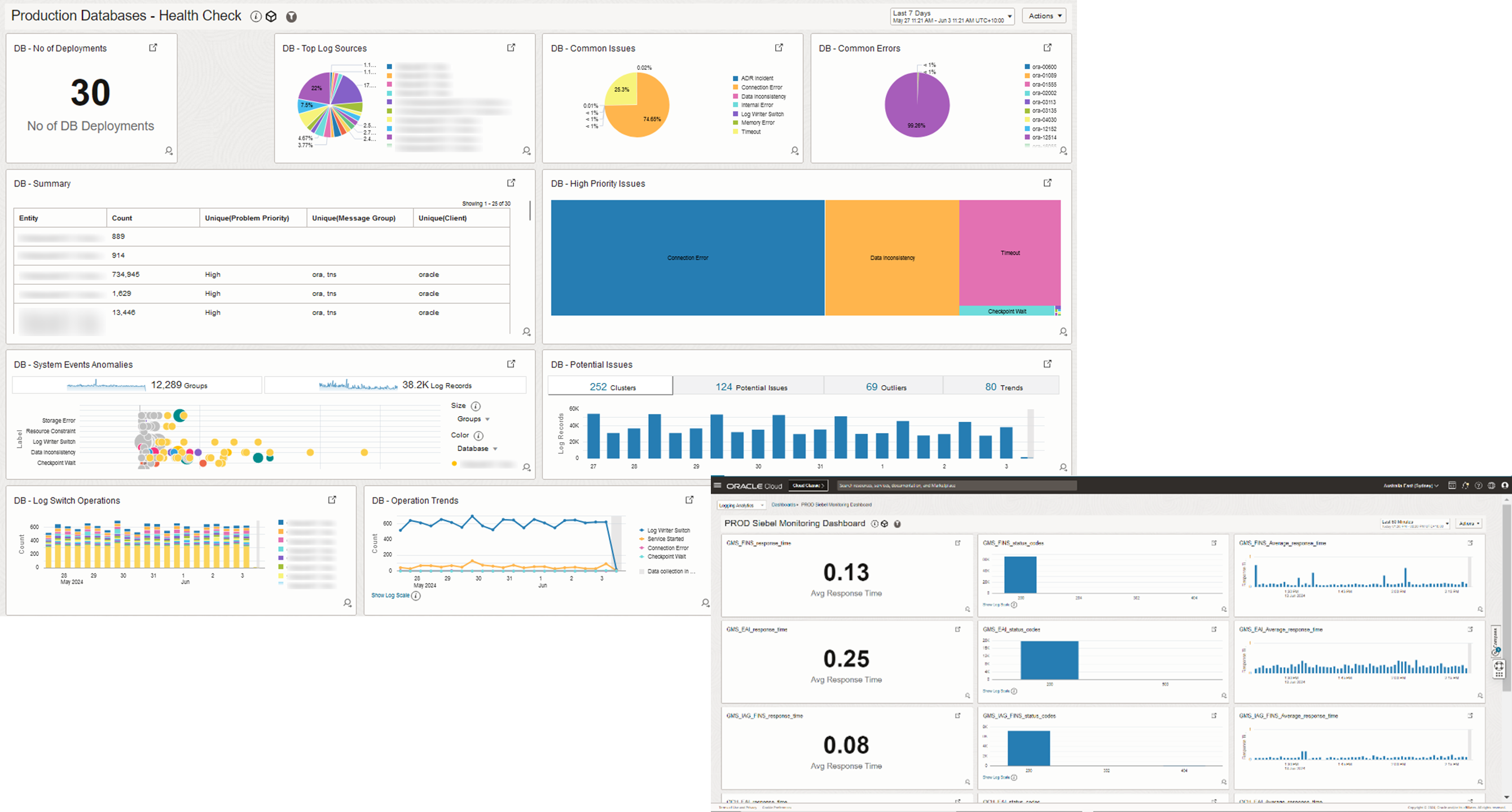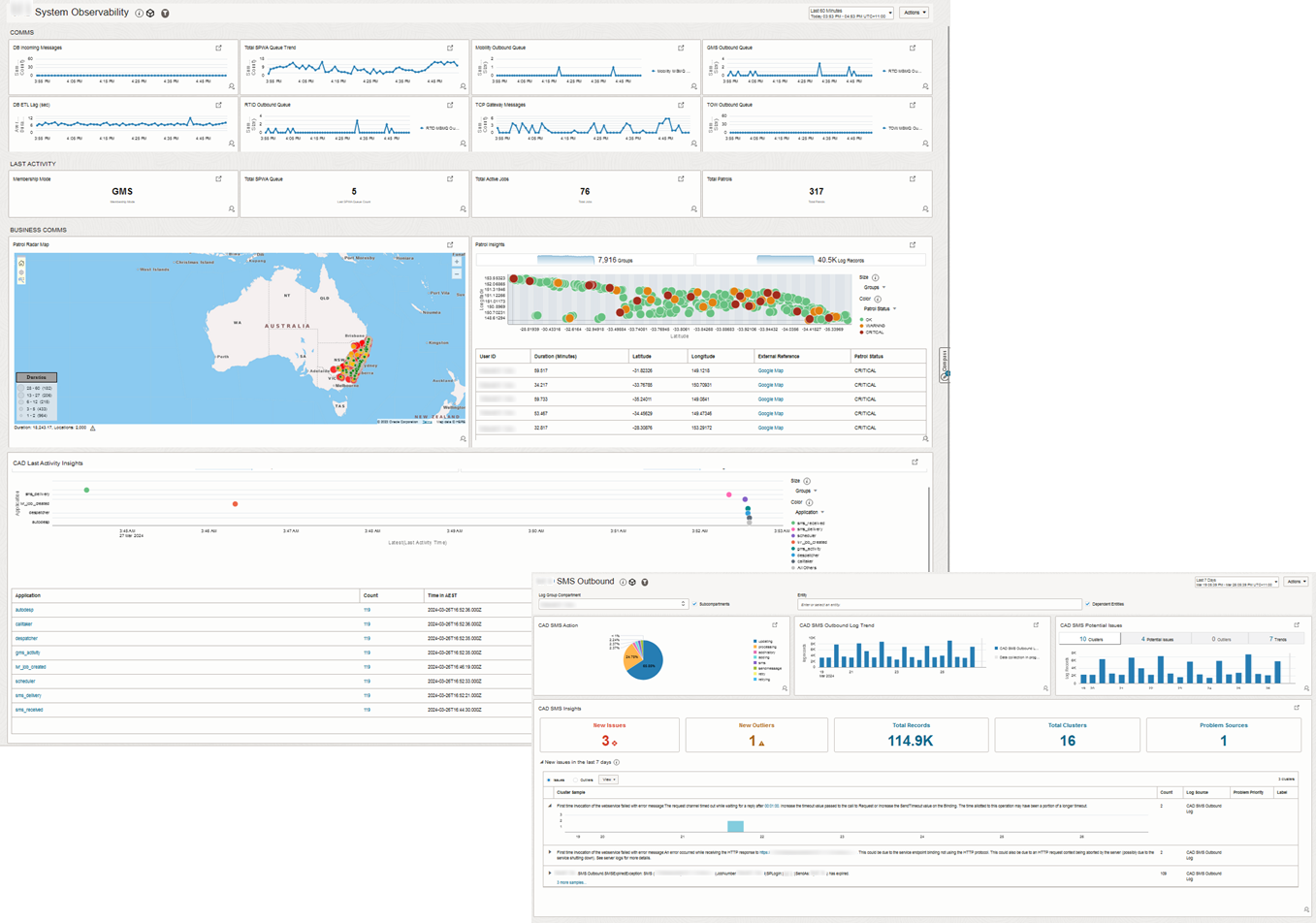Guest Author – San Fernando – Senior Manager NRMA Infrastructure
Blog contributor – Tam Nguyen – Cloud Architect, Oracle
The NRMA (National Roads and Motorists’ Association) is a large, member-owned organization in Australia that focuses on helping drivers and motorists. Founded in 1920, it operates in New South Wales and the Australian Capital Territory.
Alongside legendary NRMA roadside assistance, the NRMA Group owns or operates NRMA Parks and Resorts, SIXT car rental, and several Tasmanian tourism assets and marine businesses. As a purpose-led mutual, the NRMA works tirelessly across communities and is leading the charge in Australia’s transition to electric vehicles, by doing what it does best – advocating for a better future for all.
Why did the NRMA move to OCI Observability and Management?
The NRMA was looking to transition from Oracle Management Cloud to OCI Observability and Management (O&M). The key drivers for the OCI O&M solution included OCI native integration, support for heterogenous deployments, and the need for a single pane of glass. In 2022, the NRMA was looking to reduce operational overhead and compliance risk, improve operational productivity and end-user experience, and leverage valuable dashboard insights and visibility to improve the health of their mission-critical applications. The NRMA chose the following O&M services as their solution: OCI Logging Analytics, OCI Monitoring, OCI Notifications, OCI Stack Monitoring, and OCI Events Services in conjunction with their on-premises Enterprise Manager deployment.
The NRMA core business operations background
The NRMA runs their business-critical application on enterprise-based solutions including Oracle Applications, and heterogeneous deployments alongside native cloud services on OCI. These applications are critical to NRMA’s operations to manage, process, and dispatch information across the fleet of services provided to its membership subscribers.
“We have seen significant improvements in operational team productivity and reduced 20% of overall incidents reported. In many cases, the NRMA was able to prevent outages and quickly identify the system root cause and resolve potential incidents promptly.”
San Fernando, Senior Manager NRMA Infrastructure


What challenges were the NRMA addressing by moving to the O&M services?
- Leverage the increased capabilities of O&M to improve the performance and operations of their business-critical applications
- Proactively monitor day-to-day operations using predictive and preventative capabilities to drive greater visibility and problem-solving
- Gain greater insights via Oracle Dashboards out-of-the-box
What are you doing now that you couldn’t do before?
Today, with O&M we have more capabilities than we had before. O&M has improved our monitoring and observability capabilities which has helped us better understand traffic patterns moving from point to point. We immediately have visibility into the network, we can see how the traffic is flowing, along with how many users are there, and how many roadside assistance calls are being received and compare that to previous history. This new visibility has helped us predict roadside vehicles needed in a certain area to support our members. O&M helps us dynamically manage and allocate resources. Now we can go back in time and analyze trends, uncover issues and anomalies, and take action to correct them.
New dashboard consoles monitor and manage the health of the system servers and networks. Dashboards have been critical to monitoring and managing network patterns. O&M out-of-the-box widgets have been developed to manage Roadside Assistance movement into a GEO Map. By tracking our Roadside Assistance vehicles and monitoring traffic in real-time, we can provide faster and more efficient service. Roadside assistance manages and monitors the service health and performance, and the dashboards provide more capabilities and insights than we had before. That has been a big win for NRMA.
Today, we have insights into the number of people using our services, how the traffic is moving, and how many Roadside Assistance calls we are receiving. We can compare past trends with recent data and be proactive and dynamically allocate and manage resources. O&M workflow monitoring has helped us reduce related workflow issues and reduced the number of outages and incidents. Because of O&M, NRMA has managed to maintain and manage infrastructure with minimum O&M cost.

Siebel dashboards expedite our troubleshooting and allow us to uncover the root cause of the problem faster
AIOps, with built-in Machine Learning, deliver immediate results for issue correlation and detection. NRMA uses ML techniques such as clustering, Issue detection, and Link visualizations and eliminates the need for a data scientist on the team. We can easily digest data, analyze, detect potential issues from any log source, and collect metrics to alert issues quickly. We have seen significant improvements in operational team productivity and reduced 20% of overall incidents reported. In many cases, NRMA was able to prevent outages and quickly identify system root cause and resolve potential incidents promptly.
Rather than spending days troubleshooting and diagnosing, our IT team can now investigate and gain insights into problems much faster. The business and IT teams review activities and proactively focus and deliver much higher productivity.
With O&M, the enhanced visibility of our network migration was pivotal, for our key projects, as it enabled us to accelerate our deliverables by minimizing risk and impact to our business users and customers. Due to the value and successful outcomes we achieved, we now have an embedded process for future OCI workload migrations.
One of the NRMA’s mission-critical applications is hosted on a heterogeneous platform that provides its Roadside Assistance teams with system-wide operations monitoring related to job processing activity, message queues, and tracking Roadside Assistance vehicle locations and response status. Our legacy monitoring lacked visibility into operational health and activities. When an incident occurred there was uncertainty as to where the problem was created and critical time was lost reporting the issue, alerting, accessing the hosted environment directly, locating log files, and no clarity on what or where the anomaly was coming from.

What is next for the NRMA’s solution?
We just learned of Oracle and Google’s new relationship. Exploring the costs of that solution and how we can monitor Google Cloud Platform (GCP) services for GCP workloads is of interest to us. Maybe there is a new workload that we can explore with Oracle and our team.
Resources:
-
NRMA website – https://www.nrma.com.au/
-
Oracle Observability and Management
